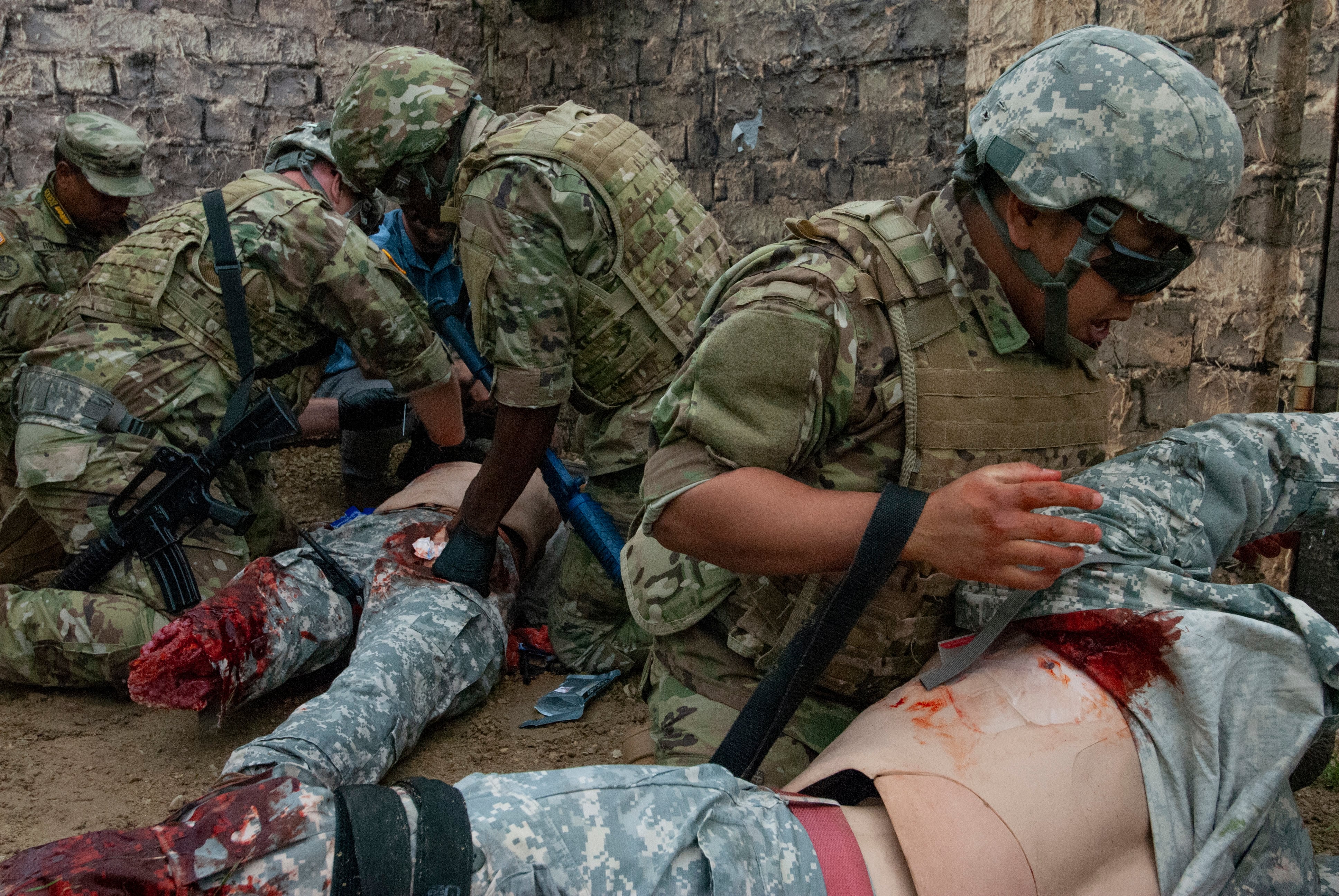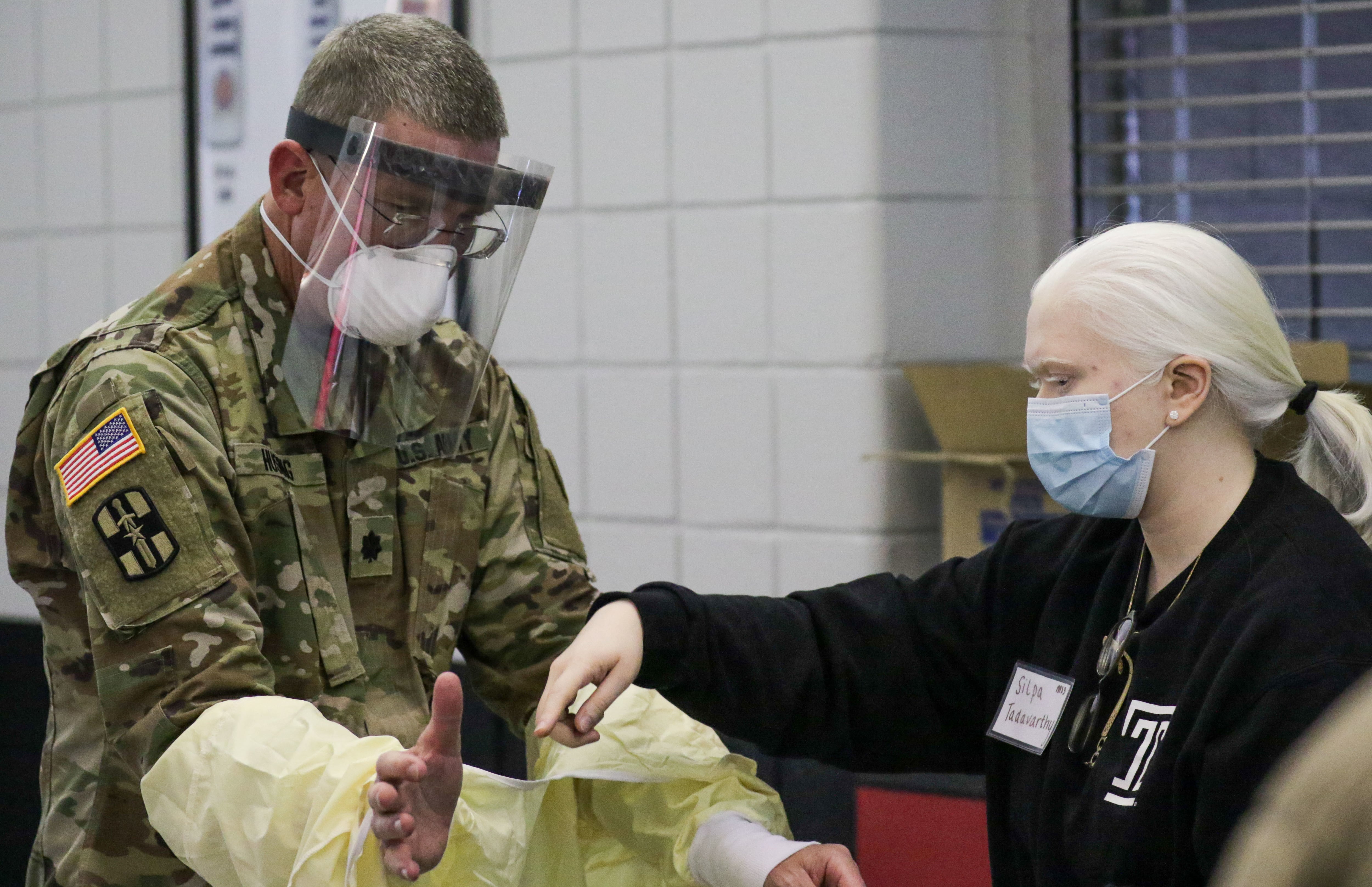Department of Defense resources played a larger role in the response to the national COVID-19 emergency than possibly any other homeland event in U.S. history, and many of those assets have gotten their first tryouts during the pandemic.
What began in January, with a handful of troops responding to assist U.S. citizens showing symptoms of the virus on cruise ships overseas, has escalated into the deployment of 20 Army urban augmentation medical task forces, four Navy rapid rural response teams, two Navy expeditionary medical facilities, one Navy acute care team, one Air Force theater hospital.
Those are just a sample of the military’s actions discussed during a panel Wednesday on the whole of government response to the pandemic at the Association of the U.S. Army’s Annual Meeting and Exposition.
RELATED

That response included all of the military service branches and their active, reserve and Guard components, alongside the Federal Emergency Management Agency and a host of entities under the Department of Homeland Security.
For example, the National Response Coordination Center was active for 220 days. The previous record for such a center to run was 93 days, said Damon Penn, assistant administrator for the FEMA Office of Response and Recovery.
Penn noted that unlike most disaster responses, such as hurricanes, where there’s an abundance of resources to be thrown at a problem, the COVID-19 response was, from the start, about “manning shortages vs. manning resources.”
Nearly 2,000 active-duty troops responded to the crisis for a period of more than 120 days, Penn said.
At the same time, DoD had to keep its own personnel protected. That has meant about 50,000 COVID-19 tests conducted each week, said Robert Salesses, deputy assistant secretary of defense for homeland defense integration and defense support of civil authorities.
Lt. Gen. Laura Richardson commands U.S. Army North, which was designated the land force component command for the COVID-19 response. She emphasized the work of scalable field hospitals that they put together with staffs of 85 medical care providers who could be on the ground and working within one to two days of being called up.
Two of those deployed to New York City, one and a half to Seattle. But many military medical providers also worked inside local hospitals, alongside overwhelmed civilian personnel, she said.
That numbered 3,840 military medical providers tasked to 134 missions so far this year, hitting 10 states, 31 cities, 47 hospitals and nine alternate care facilities, she said.
Currently, 17,000 Army National Guard troops remain on duty in COVID-19 response, said Lt. Gen. Jon Jensen, director of the Guard.
They’ve distributed 387 million personal protective equipment items such as masks and gloves, served 367 million meals and conducted 9.3 million medical screening tests, he said.
In total, the Guard has deployed 47,000 troops in COVID-19 response since the inception of the pandemic.
A new phase of work came into its own for the Army Reserve. Where most of the disaster response mission is tasked to the Guard, this time the urban augmentation medical task forces the Army Reserve provided out of the 3rd Medical Command, gave the reserves a chance to contribute rapidly, said command head, Maj. Gen. Joe Robinson, during a separate AUSA panel.
We were able to put people on the ground in less than two weeks, nine days in one case, he said.
That included forming and equipping the team before deployment.
Maj. Erin Velazquez, who headed one of those teams, UAMTF 332-1, said some existing Army medical training and resiliency models were deployed to help train civilian counterparts in the excessive demands of the pandemic.
Todd South has written about crime, courts, government and the military for multiple publications since 2004 and was named a 2014 Pulitzer finalist for a co-written project on witness intimidation. Todd is a Marine veteran of the Iraq War.



